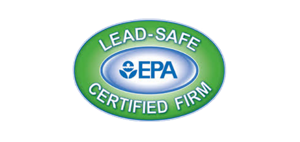Water damage can have devastating effects on your home and belongings. From burst pipes to natural disasters, it is crucial to understand the different types of water damage in order to identify and prevent potential issues.
In this section, we will provide an overview of the various types of water damage that can occur in your home. By familiarizing yourself with these types, you will be better equipped to take timely action and mitigate further damage.
Identifying water damage is the first step towards effective restoration and prevention. Whether it’s a visible leak or hidden moisture, being able to spot the signs of water damage will allow you to address the problem before it escalates.
- Understanding the types of water damage helps you identify and prevent potential issues.
- Water damage can occur from various sources, such as burst pipes or natural disasters.
- Identifying signs of water damage is crucial for timely intervention and restoration.
- Hidden water damage may require moisture detection methods for accurate identification.
- Being proactive in preventing water damage can save you time, money, and stress in the long run.
Types of Clean Water Damage
Clean water damage refers to water damage caused by uncontaminated sources, such as burst pipes or appliance leaks. While the water may be clean, the damage it can cause to your home can be significant if not addressed promptly. In this section, we will discuss the common causes of clean water damage and provide guidance on how to address them effectively.
Causes of Clean Water Damage
There are several common causes of clean water damage:
- Burst pipes: When pipes freeze, corrode, or deteriorate over time, they can burst and release a large volume of water into your home. Burst pipes can cause extensive water damage to walls, ceilings, and floors.
- Appliance leaks: Dishwashers, refrigerators, washing machines, and other household appliances that utilize water can develop leaks over time. These leaks may go unnoticed for long periods, leading to water damage in surrounding areas.
It’s important to note that even though the water causing the damage is clean, it can still result in mold growth and structural issues if not properly addressed.
Addressing Clean Water Damage
When faced with clean water damage, swift action is key to minimize further damage. Here are some steps to address clean water damage:
- Turn off the water source: If you experience a burst pipe or an appliance leak, locate the shut-off valve and turn off the water supply immediately. This will help prevent further water damage.
- Contact a professional: It’s advisable to contact a professional water damage restoration company to assess the extent of the damage and formulate a remediation plan.
- Document the damage: Take photos and make a detailed inventory of the affected areas and belongings. This documentation will be useful for insurance claims.
- Remove standing water: Use a wet/dry vacuum or mop to remove any standing water from the affected areas. This helps prevent additional damage and accelerates the drying process.
- Dry and dehumidify: Use fans, dehumidifiers, and open windows to facilitate drying. It’s crucial to thoroughly dry affected areas to prevent mold growth.
- Restore and repair: Once the affected areas are dry, repair any damaged structures, such as walls, ceilings, and flooring, to restore your home to its pre-damage condition.
Remember, even though the water causing the damage is clean, it’s essential to address it promptly to prevent further issues. Ignoring clean water damage can lead to costly repairs and potential health hazards.
| Damage Type | Causes | Actions |
|---|---|---|
| Clean Water Damage | Burst pipes, appliance leaks | – Turn off water source – Contact a professional – Document the damage – Remove standing water – Dry and dehumidify – Restore and repair |
Types of Grey Water Damage
Grey water damage refers to the harm caused by water that contains some degree of contamination, such as sump pump failures or dishwasher overflows. While not as hazardous as black water damage, grey water can still pose risks to your health and property if not addressed promptly and properly.
The potential risks associated with grey water damage include the spread of pathogens, mold growth, and structural deterioration. It’s crucial to take swift action to mitigate these risks and prevent further damage. Here are the necessary steps to follow:
- Ensure your safety: Before attempting any cleanup, make sure to wear protective gear such as gloves and goggles. Turn off the power supply to affected areas and ensure adequate ventilation.
- Stop the source: If the grey water damage is caused by a sump pump failure or dishwasher overflow, turn off the water supply to prevent it from continuing to flow.
- Address standing water: Use a wet/dry vacuum or mop to remove any standing grey water. Be cautious not to spread the contamination to unaffected areas.
- Clean and disinfect: Thoroughly clean affected surfaces with a mixture of detergent and water. After cleaning, use a disinfectant to eliminate any remaining bacteria or pathogens.
- Dry thoroughly: Properly dry the affected area and items using fans, dehumidifiers, or natural ventilation. Moisture control is essential to prevent mold growth and further damage.
- Monitor for signs of mold: Keep an eye out for any signs of mold, such as musty odors or visible growth. If mold is present, seek professional mold remediation services.
- Inspect for structural damage: After addressing the initial cleanup, inspect your property for any structural damage caused by the grey water. Consult with a professional if necessary.
By following these steps, you can effectively mitigate the risks associated with grey water damage and minimize its impact on your home. However, it’s important to note that for extensive or severe grey water damage, it’s advisable to seek the assistance of water damage restoration professionals.
Image: Grey water damage
| Causes of Grey Water Damage | Potential Risks | Mitigation Steps |
|---|---|---|
| Sump pump failure | Spread of pathogens, property damage | Ensure safety, stop the source, clean and disinfect, monitor for mold growth |
| Dishwasher overflow | Mold growth, structural deterioration | Ensure safety, stop the source, clean and disinfect, dry thoroughly |
Types of Black Water Damage
Black water damage is the most severe type of water damage that can occur in your home. It is caused by highly contaminated water sources, such as sewage backups or floodwaters. Black water contains hazardous substances, including bacteria, viruses, and chemicals, posing significant health risks to you and your family.
When dealing with black water damage, it is crucial to understand the specialized cleanup procedures required for your safety and the restoration of your home. It is highly recommended to hire professional water damage restoration experts who have the necessary expertise and equipment to handle black water cleanup effectively.
Here are the potential health hazards associated with black water damage:
- Exposure to harmful bacteria and viruses
- Risk of infections and diseases
- Potential respiratory issues
- Allergic reactions
- Increased chances of mold growth
Due to the high level of contamination, proper precautions must be taken during the cleanup process, including wearing personal protective equipment (PPE) and using disinfectants to sanitize the affected areas. Additionally, any porous materials, such as carpets and upholstery, contaminated by black water should be discarded since they cannot be effectively sanitized.
Remember, black water damage requires immediate attention, as the longer it remains untreated, the more extensive the damage and potential health risks become. If you are facing black water damage, contact a professional water damage restoration company to ensure safe and thorough cleanup.
Specialized Cleanup Procedure for Black Water Damage:
| Step | Procedure |
|---|---|
| 1 | Assess the extent of the damage and identify the source of contamination. |
| 2 | Wear personal protective equipment (PPE), including gloves, goggles, and respirators. |
| 3 | Extract standing water using specialized pumps or vacuums. |
| 4 | Remove and dispose of contaminated porous materials, such as carpets and furniture. |
| 5 | Clean and sanitize affected surfaces using appropriate disinfectants. |
| 6 | Dry the area using professional-grade dehumidifiers and air movers to prevent mold growth. |
| 7 | Perform thorough testing and inspection to ensure the area is completely dry and properly sanitized. |
By understanding the risks and following the necessary precautions, you can ensure a safe and efficient cleanup process for black water damage. It is always recommended to consult with professionals who specialize in water damage restoration to protect your health and restore your home to its pre-damage condition.
Identifying Hidden Water Damage
Water damage can be sneaky. It doesn’t always show obvious signs, and the damage it causes can go beyond what meets the eye. Hidden water damage, if left untreated, can lead to serious structural problems in your home. That’s why it’s important to know how to identify hidden water damage through moisture detection and signs to look out for.
Moisture detection is a crucial tool in identifying hidden water damage. Moisture meters can measure the moisture content in building materials, helping you pinpoint potential trouble areas. By using these tools, you can identify hidden water sources, such as leaks behind walls or under floors, before they cause extensive damage.
Additionally, there are several signs that can indicate the presence of hidden water damage. These include:
- Musty odors: If you notice a lingering musty smell in your home, it could be a sign of hidden water damage. Damp, stagnant areas can create mold and mildew, which produce these distinct odors.
- Discoloration: Stains or discoloration on walls, ceilings, or floors can be indicative of water damage. Keep an eye out for any unusual changes in color or texture.
- Peeling or bubbling paint: Excessive moisture can cause paint to peel or bubble, especially in areas that are consistently exposed to moisture, such as bathrooms or kitchens.
- Warped wood: When wood absorbs water, it can warp or become swollen. Check for any signs of warping in wooden floors, furniture, or structural elements.
- Sagging or soft walls: Water damage can weaken drywall and cause it to sag or feel soft to the touch. Pay attention to any changes in the condition of your walls.
- Increase in utility bills: If your water bills have been unexpectedly rising, it could be a sign of a hidden water leak. Monitor your bills and investigate any unexplained spikes.
Being vigilant and proactive in identifying hidden water damage can save you from costly repairs and potential health hazards. If you suspect hidden water damage in your home, it’s important to address it promptly by contacting a professional water damage restoration company.
Remember, early detection and mitigation are key to preventing further damage and protecting the integrity of your home.
Preventing Water Damage
Taking proactive measures to prevent water damage is crucial for the longevity of your home. By implementing the following maintenance tips and waterproofing strategies, you can effectively safeguard your property against water damage:
- Inspect and maintain the roof: Regularly check your roof for any signs of damage or wear. Repair or replace missing or damaged shingles promptly to prevent water intrusion.
- Ensure proper drainage: Clear out gutters and downspouts regularly to prevent clogs and ensure proper water flow. Consider installing gutter guards to minimize debris buildup and redirect water away from your home’s foundation.
- Check window and door seals: Inspect the seals around windows and doors for any gaps or cracks. Replace worn-out weatherstripping to prevent water from seeping inside.
- Monitor plumbing connections: Regularly inspect pipes, faucets, and water supply lines for leaks or signs of damage. Repair any issues immediately to prevent water damage from plumbing failures.
- Install a sump pump: If your area is prone to basement flooding, consider installing a sump pump to prevent water buildup. Test the pump regularly to ensure it is functioning correctly.
- Improve yard grading: Ensure that the ground around your home slopes away from your foundation. This helps prevent water from pooling near the base of your house, reducing the risk of water seepage.
- Apply waterproof coatings: Consider applying waterproof sealants to surfaces susceptible to water damage, such as basement walls or concrete driveways. These coatings act as a protective barrier against moisture.
Taking these preventive measures can significantly reduce the risk of water damage and help maintain the structural integrity of your home.
Dealing with Water Damage Restoration
When water damage occurs in your home, it’s essential to take swift action to minimize further damage and prevent potential health hazards. Hiring professionals for water damage restoration is the best course of action to ensure a thorough and efficient cleanup process.
Here are the essential steps to follow when dealing with water damage restoration:
- Contact Professional Restoration Services: Look for reputable and experienced water damage restoration companies in your area. Hiring professionals ensures that the restoration process is done correctly and efficiently, minimizing the risk of further damage.
- Evaluate Insurance Coverage: Before starting the restoration process, review your homeowner’s insurance policy, and determine if water damage restoration is covered. Contact your insurance provider to file a claim and understand the specifics of your coverage.
- Safety First: When entering the water-damaged area, prioritize your safety. Make sure to turn off the electricity to the affected area to avoid the risk of electrical shock. Wearing protective gear, including gloves and boots, is also recommended.
- Water Removal: The first step in the restoration process is to remove standing water from your property. Using pumps, vacuums, or professional-grade water extraction tools, the restoration team will extract excess water and moisture from the affected area.
- Drying and Dehumidification: After water removal, the drying process begins. The restoration experts will use industrial-grade dehumidifiers and air movers to eliminate moisture and prevent further damage, such as warping or mold growth.
- Cleaning and Sanitization: Once the area is dry, the restoration team will thoroughly clean and disinfect all surfaces to ensure the removal of contaminants and prevent health risks. This step also helps eliminate odors caused by water damage or mold growth.
- Restoration and Repairs: After the cleaning and sanitization process, the restoration team will assess the damage to the structure, walls, flooring, and any affected belongings. They will make necessary repairs, such as replacing damaged drywall, flooring, or insulation, to restore the affected area to its pre-damaged state.
- Document and Communicate: Throughout the restoration process, it’s crucial to document the damage by taking photos and keeping detailed records of all expenses incurred. Maintain open communication with your insurance provider to ensure a smooth and efficient claims process.
Dealing with water damage can be overwhelming, but hiring professionals will alleviate the burden and ensure a thorough restoration process. Remember to contact restoration services promptly, evaluate your insurance coverage, and prioritize safety during the cleanup. By following these steps, you can restore your home and minimize the long-term effects of water damage.
Conclusion
In summary, understanding the different types of water damage is vital for homeowners to effectively identify, prevent, and address any potential issues that may arise. By being proactive and seeking professional assistance when necessary, you can safeguard your home from the devastating effects of water damage.
Whether it’s clean water damage caused by burst pipes or appliance leaks, grey water damage resulting from sump pump failures or dishwasher overflows, or the severe black water damage caused by sewage backups or floodwaters, each type requires specific attention and remediation.
Furthermore, it is essential to remain vigilant for hidden water damage, as it may not always be immediately apparent. Through proper moisture detection techniques and being aware of common signs of water damage, you can identify hidden issues before they escalate into more significant structural concerns.
Remember, prevention is key. By implementing routine maintenance tips and considering waterproofing measures, you can significantly reduce the risk of water damage occurring in your home. However, in the event that water damage does occur, promptly contacting professionals for restoration and understanding insurance claim processes can provide peace of mind and ensure a swift return to normalcy.
FAQ
What are the different types of water damage?
There are three main types of water damage: clean water damage, grey water damage, and black water damage.
What is clean water damage?
Clean water damage refers to water damage caused by uncontaminated sources, such as burst pipes or appliance leaks.
What are the common causes of clean water damage?
Clean water damage is often caused by burst pipes, appliance leaks, or plumbing system failures.
How can I address clean water damage?
To address clean water damage, it is important to identify and repair the source of the water leak, remove standing water, dry affected areas, and restore any damaged materials.
What is grey water damage?
Grey water damage is caused by water that contains some level of contamination, such as sump pump failures or dishwasher overflows.
What are the risks associated with grey water damage?
Grey water contains contaminants that can pose health risks and promote the growth of mold and bacteria if not properly addressed.
How can I mitigate grey water damage?
Mitigating grey water damage involves identifying and repairing the source of the water issue, removing standing water, thoroughly cleaning and sanitizing affected areas, and ensuring proper ventilation for drying.
What is black water damage?
Black water damage is the most severe type of water damage, caused by highly contaminated water sources like sewage backups or floodwaters.
What are the health hazards associated with black water damage?
Black water contains hazardous pathogens, chemicals, and other contaminants, which can pose significant health risks if not handled properly.
How should black water damage be addressed?
Black water damage should be handled by professionals due to the high health risks involved. They will safely remove the contaminated water, thoroughly clean and disinfect affected areas, and perform specialized procedures for decontamination and restoration.
How can I identify hidden water damage?
Hidden water damage can be identified through moisture detection tools and by looking out for signs such as musty odors, water stains, peeling paint, warped wood, or mold growth.
What steps can I take to prevent water damage?
Preventing water damage involves regular maintenance, such as inspecting and repairing roof leaks, sealing windows and doors, clearing gutters and downspouts, maintaining proper drainage, insulating pipes, and installing a sump pump or water detection system.
How do I deal with water damage restoration?
When dealing with water damage restoration, it is important to hire professionals with expertise in water damage cleanup and restoration. They will assess the extent of the damage, extract water, dry and dehumidify affected areas, clean and sanitize, and restore the property to its pre-damage condition.
What should I know about insurance claims for water damage?
It is advisable to notify your insurance provider as soon as water damage occurs. Document the damage with photographs, keep records of expenses, and work closely with your insurance company to ensure a smooth claims process.









